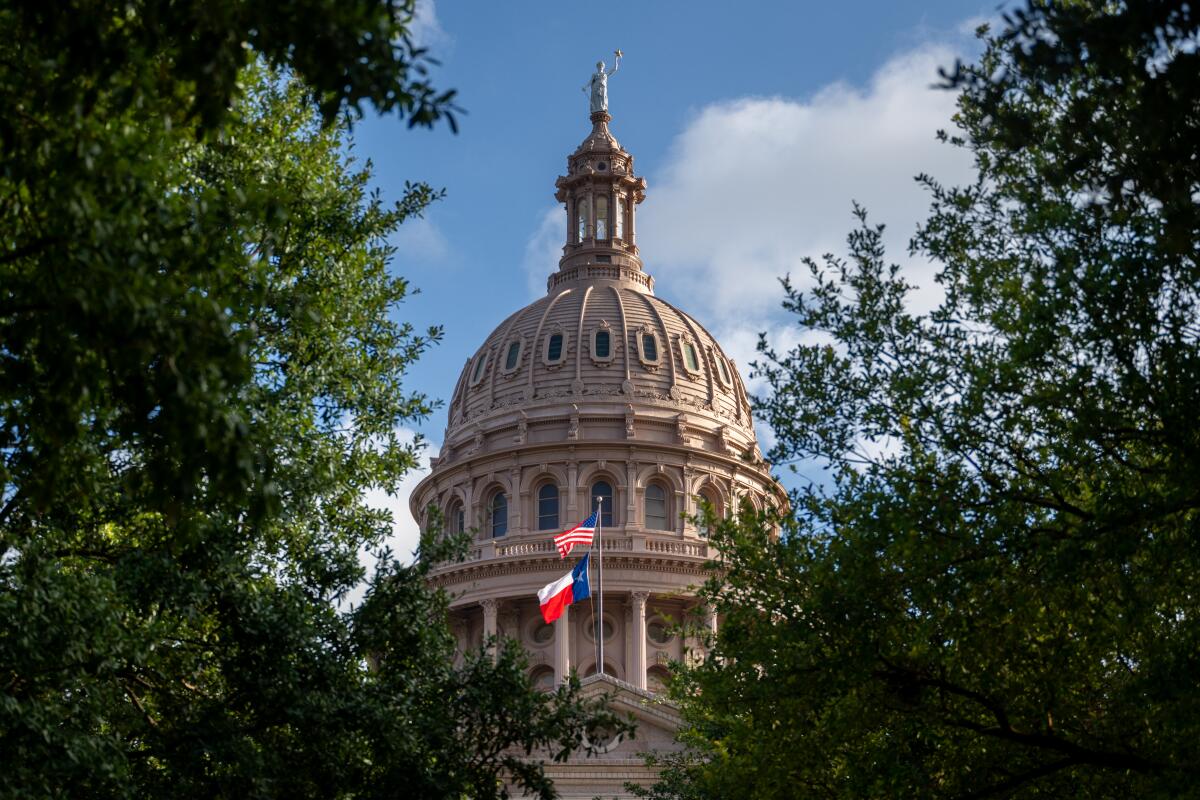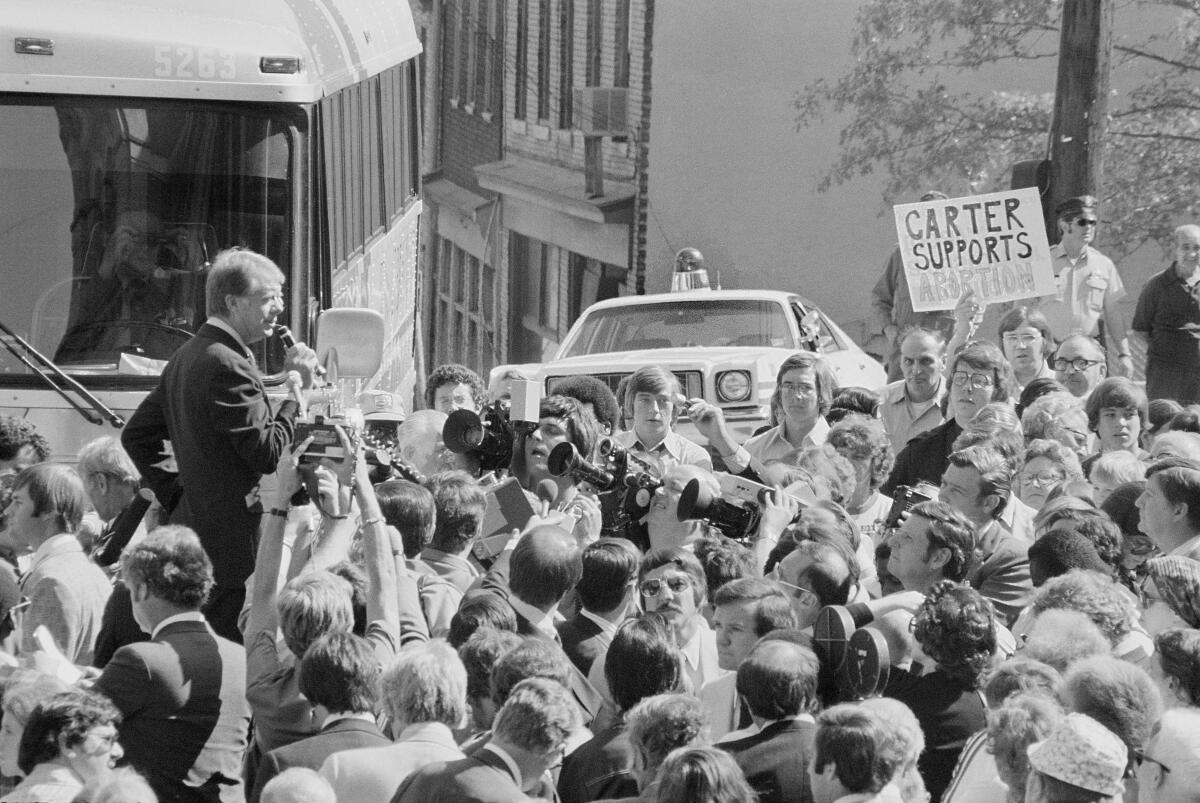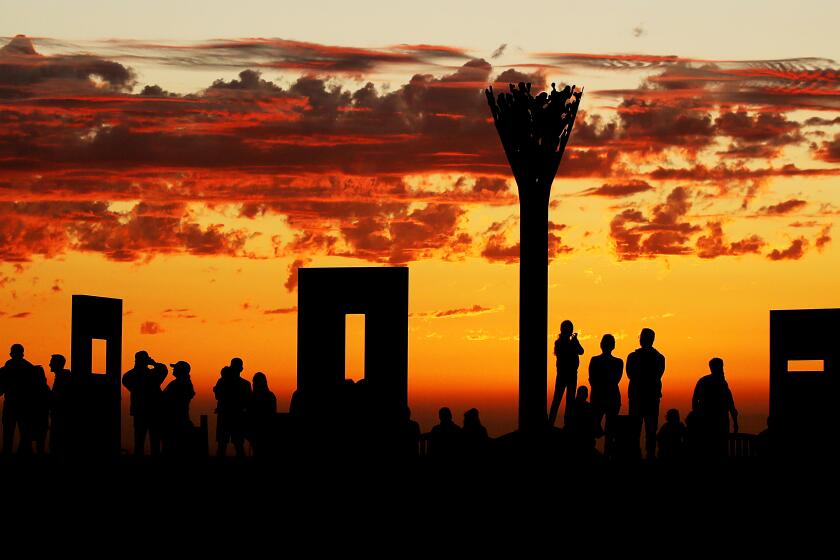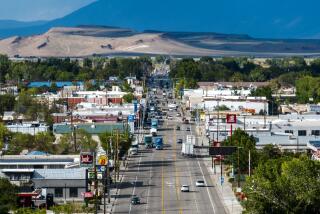Column: In two decades, much of the West has turned blue. Why hasn’t Texas?

Over the last 20 years, the West has politically transformed.
The onetime Republican stronghold has become a Democratic bastion, dramatically reshaping the fight for the White House as Colorado, New Mexico and Oregon joined California and Washington in the ranks of solid-blue states.
Arizona and Nevada, once reliably red, have become two of the country’s prime presidential battlegrounds.
But Texas hasn’t budged.
In 2020, Joe Biden lost the state by 5 percentage points. It was the best showing by a Democratic presidential candidate in nearly a quarter century. But that performance now seems more like a high-water mark than a foundation on which to build.
“You’re just not seeing Democrats finding the resources or the leverage … to really challenge Republicans,” said Jim Henson, head of the Texas Politics Project at the University of Texas in Austin.
I spent much of this year traveling along the West Coast, across the Southwest desert and into the Rocky Mountains for a series, “The New West,” that explores the region’s political makeover.
The reasons for the change vary from state to state.
In Oregon, an economic makeover was key. In New Mexico, increased urbanization helped bring about the shift. In California and Nevada, respectively, President Clinton and former Senate Majority Leader Harry Reid worked assiduously to reengineer the states’ political DNA.
But there are commonalities throughout the region. Among them: Suburbs that have gone from red to blue. State Republican parties that have turned sharply rightward and grown increasingly Trumpy. A burgeoning and more influential Latino electorate.
All those factors exist in Texas, which, like Democratic-leaning California and New Mexico, is now a majority-minority state. Still, it remains solidly Republican.
Why is that?
A series of columns by Mark Z. Barabak
Size, for one thing.
Texas sprawls across two time zones and more than 250,000 square miles. (That’s more than half again as large as California, the next biggest state by land mass.) Reaching its 30 million residents requires advertising in 20 media markets, including some of the most expensive in the country.
That makes it harder to replicate the success Democrats have enjoyed in, say, Arizona (population 7 million) and Nevada (population 3 million), where the majority of voters are clustered in or around Phoenix and Las Vegas, respectively.
“It’s all kind of concentrated and layered” in those states, said James Aldrete, an Austin-based Democratic strategist who has worked on campaigns throughout the Southwest. He pointed out that the clustering of voters makes it much cheaper and easier than in Texas to achieve “multiple touches” through TV advertising, social media, phone-banking and door-knocking.
Texas’ rapidly expanding Latino electorate also hasn’t benefited Democrats the way it has in other states such as California, Arizona and Colorado. That’s partly because Latinos — or Hispanics, as many in Texas prefer to be called — tend to more conservative, politically and culturally, in Texas than in other states.
(There are many theories why, some going back to the flight of middle-class Mexicans after the country’s revolution in the early 20th century, others involving religiosity or the large number of Latinos working in law enforcement or the oil and gas industry.)
Mike Baselice, a Republican pollster in Austin, has worked extensively in Texas and California. Surveying Latino voters ahead of the 2022 midterm election, he found that 40% in Texas described themselves as conservative, compared with 28% in California. Just over 3 in 10 Texas Hispanics identified themselves as liberal, compared with just over 4 in 10 Latinos in California.
“Anglos and mixed-race voters in Texas are also more conservative and less liberal than Anglos and mixed-race voters in California,” Baselice said.
Average Texans and Californians agree a lot more than their states’ policies would suggest, even on issues like abortion and guns. Each tips slightly in one direction, but politics magnify the differences.
Another key difference in Texas: Republicans have a long history of actively courting Hispanic voters, winning a third or sometimes considerably more of that electorate.
“It’s been customary,” said Karl Rove, who helped build the Texas GOP and twice elect the state’s former governor, George W. Bush, to the White House. “Unlike in California, where by [Proposition 187] the Republican Party was seen as sort of the adversary of the Hispanic community. That’s never happened here.”
(For their part, Democrats insist that will change if, as expected, Republican Gov. Greg Abbott signs a tough new law that would allow Texas police to arrest people for illegally crossing the border from Mexico and grant judges the power to order undocumented immigrants to leave the country.)
But perhaps the main reason Democrats have failed to swing Texas is the simplest: Republicans’ overwhelming strength and Democrats’ persistent losing streak have discouraged party donors, candidates and political strategists from investing the vast amounts of time and resources it would take to turn the state into a presidential battleground.
And because Democrats have failed to make that substantial investment, they keep losing.
It’s a self-perpetuating cycle that has vexed a generation of Democrats, who’ve turned old and gray waiting for the Lone Star State to become competitive once more. The last time a Democratic presidential candidate won Texas, narrowly, was in 1976, when Jimmy Carter was a 52-year-old political upstart. He recently turned 99.

Garry Mauro was executive director of the Texas Democratic Party in 1980 when Carter was battling Ronald Reagan to win a second term. When Reagan pulled 10 points ahead in Texas, Democrats pulled the plug, beginning their history of abandoning the state. (Carter lost by 14.)
“This is not a new discussion for me,” said Mauro, who served four terms as Texas land commissioner, back when Democrats could win statewide office, ending in 1999. “We’ve been reaping the seeds that we sowed a long time ago.”
Still, Democrats remain hopeful. (Heck, that’s the only way to remain a Democrat in Texas.)
A first-of-its-kind survey of more than 3,300 immigrants nationwide confounds some of the conventional wisdom surrounding their politics and partisanship.
Lisa Turner is state director of the Lone Star Project, a political action committee that promotes Democratic candidates and causes. She sees a combination of trend lines — a rising Black population, shrinking rural communities, growing suburbs — and the Republican Party’s restrictive stance on abortion and other social issues moving Texas in the same competitive direction as Nevada and Arizona.
“They’re attacking freedom ... and liberties that are part of the psyche of our state,” Turner said. “Republicans are trying to tell you where to live, how to live, what to read, if you can have kids, when you can have kids.”
Still, 2024 seems unlikely to bring about a drastic change in Democratic fortunes.
Over the last two decades, the West may have become Democrats’ political promised land. But in Texas, they’re still wandering in the desert.
More to Read
Get the latest from Mark Z. Barabak
Focusing on politics out West, from the Golden Gate to the U.S. Capitol.
You may occasionally receive promotional content from the Los Angeles Times.














